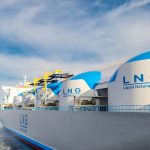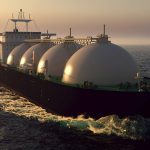

Navigating the Intricacies of LNG Shipping: How LNG Shipping Companies Make It Work?
In the realm of global energy, liquefied natural gas (LNG) is a crucial player. As demand for cleaner energy sources continues to rise, the importance of LNG in the energy mix is becoming more pronounced. However, getting LNG from its source to where it’s needed is no simple feat. It requires a sophisticated and intricate network of LNG shipping companies and services.
The Role of LNG Shipping Companies
LNG shipping companies play a pivotal role in the global energy market, serving as the linchpin of the LNG supply chain. Their primary responsibility is to transport liquefied natural gas (LNG) from production facilities to end-users across the globe.
Transportation Expertise
LNG shipping companies leverage their extensive experience and expertise in maritime transportation to ensure the safe, efficient, and timely delivery of LNG. They are responsible for every stage of the transportation process, from loading LNG onto specialized vessels at production facilities to unloading it at receiving terminals.
Specialized Vessels
To meet the unique challenges of LNG transportation, LNG shipping companies operate a fleet of specialized vessels known as LNG carriers. These vessels are purpose-built to transport LNG safely and efficiently over long distances. They are equipped with advanced technologies and safety features to maintain the integrity of the cargo and ensure the safety of the crew and the environment.
Advanced Technology
LNG carriers are equipped with state-of-the-art technology, including sophisticated cargo containment systems, advanced navigation and communication systems, and safety features such as gas detection systems and fire suppression systems. These technologies enable LNG shipping companies to monitor and manage every aspect of the transportation process, ensuring the safe and efficient delivery of LNG.
Compliance and Safety
Compliance with international regulations and industry standards is paramount in LNG shipping. LNG shipping companies adhere to stringent safety and environmental standards to mitigate the risk of accidents and protect the environment. They invest heavily in training, safety protocols, and emergency response procedures to ensure the safety of their crew, vessels, and cargo.
Global Reach
LNG shipping companies operate on a global scale, serving customers and markets around the world. They play a critical role in connecting LNG producers with consumers, enabling access to clean, reliable energy sources wherever they are needed. Whether it’s delivering LNG to power plants, industrial facilities, or residential consumers, LNG shipping companies ensure that LNG reaches its destination safely, efficiently, and on time.
In essence, LNG shipping companies are the unsung heroes of the global energy market, facilitating the safe and efficient transportation of LNG and helping to meet the world’s growing demand for clean, reliable energy.
Intricacies of LNG Shipping Services
Specialized Vessels
LNG ships, also known as LNG carriers, are specially designed to transport liquefied natural gas. These vessels are equipped with advanced technologies and safety features to ensure the safe and efficient transportation of LNG over long distances.
LNG Carrier Types
There are several types of LNG carriers, each designed to meet specific requirements:
- Moss-Type LNG Carriers:
Moss-type LNG carriers feature spherical storage tanks surrounded by a cylindrical outer shell. This robust design provides structural integrity and allows for efficient containment of LNG during transportation. These vessels are well-suited for long-distance voyages, offering stability and reliability in challenging maritime environments.
- Membrane-Type LNG Carriers:
Membrane-type LNG carriers utilize a membrane cargo containment system, consisting of a thin stainless steel membrane supported by insulation layers. This innovative design offers several advantages, including increased cargo capacity, improved insulation, and enhanced safety. Membrane-type LNG carriers are highly versatile and can accommodate a wide range of LNG volumes and transportation requirements.
- Semi-Ref Liquefied Gas Carriers:
Semi-ref liquefied gas carriers are designed to transport various liquefied gases, including LNG, ethylene, and LPG (liquefied petroleum gas). These vessels are equipped with specialized cargo containment systems and are often used for short-haul routes or in regions with limited infrastructure. Semi-ref liquefied gas carriers offer flexibility and efficiency, making them ideal for diverse transportation needs.
Advanced Technologies
LNG carriers are equipped with advanced technologies and safety features to ensure the safe and efficient transportation of LNG:
Cargo Containment Systems: LNG carriers are equipped with sophisticated cargo containment systems designed to maintain the LNG at cryogenic temperatures (-162°C) during transportation. These systems utilize specialized materials and insulation techniques to minimize heat transfer and prevent the LNG from vaporizing.
Navigation and Communication Systems: LNG carriers are equipped with advanced navigation and communication systems to ensure safe and efficient passage through maritime routes. These systems include GPS (Global Positioning System), radar, AIS (Automatic Identification System), and satellite communication, allowing the vessel to maintain real-time awareness of its location and surroundings.
Safety Features: Safety is paramount in LNG shipping, and LNG carriers are equipped with a range of safety features to protect the crew, vessel, and cargo. These features include gas detection systems, fire suppression systems, emergency shutdown systems, and collision avoidance systems, among others. LNG carriers undergo rigorous safety inspections and audits to ensure compliance with international regulations and industry standards.
Environmental Considerations
In addition to safety considerations, LNG shipping services also prioritize environmental sustainability:
Emissions Reduction: LNG carriers are designed to minimize emissions and environmental impact. Many LNG carriers are equipped with advanced propulsion systems, such as dual-fuel engines or LNG-fueled engines, to reduce emissions of greenhouse gases and air pollutants. Additionally, LNG carriers employ energy-efficient technologies and operational practices to optimize fuel consumption and reduce environmental footprint.
Ballast Water Management: LNG carriers implement strict ballast water management practices to prevent the spread of invasive species and protect marine ecosystems. These practices include ballast water exchange, ballast water treatment, and adherence to international ballast water management regulations.
In summary, LNG shipping services rely on specialized vessels equipped with advanced technologies and safety features to ensure the safe, efficient, and environmentally sustainable transportation of LNG. These vessels play a critical role in the global energy market, facilitating the reliable delivery of LNG to customers and markets around the world.
How LNG Ships Work?
LNG carriers operate on a simple yet effective principle: liquefied natural gas is loaded onto the vessel at the production facility, where it is stored in insulated tanks at cryogenic temperatures (-162°C). The LNG carrier then transports the LNG to its destination, where it is unloaded and regasified for use.
Challenges and Future Trends
While LNG shipping has come a long way, several challenges and future trends shape the industry:
1. Market Volatility:
LNG shipping companies must navigate through fluctuating market conditions, including changes in supply and demand, geopolitical factors, and regulatory requirements.
2. Infrastructure Development:
The development of LNG infrastructure, including liquefaction plants, export terminals, and regasification facilities, is essential for the growth of the LNG market. LNG shipping companies must collaborate with stakeholders to ensure the timely and cost-effective development of infrastructure.
3. Environmental Regulations:
Stringent environmental regulations, including emissions standards and ballast water management requirements, are driving the development of eco-friendly LNG carriers. LNG shipping companies must invest in green technologies and sustainable practices to reduce their environmental impact.
4. Technological Advancements:
Technological advancements, such as the development of new propulsion systems, digitalization, and automation, are revolutionizing the LNG shipping industry. LNG shipping companies must stay abreast of these advancements to remain competitive and enhance operational efficiency.
5. Emerging Markets:
The growth of LNG demand in emerging markets, particularly in Asia, presents new opportunities for LNG shipping companies. However, operating in these markets requires an understanding of local regulations, infrastructure constraints, and market dynamics.
Conclusion
LNG shipping is a complex and dynamic industry that plays a vital role in the global energy market. LNG shipping companies face numerous challenges, including market volatility, infrastructure development, environmental regulations, technological advancements, and emerging markets. However, with their expertise, innovation, and commitment to excellence, LNG shipping companies are driving the growth of the LNG market and helping to meet the world’s growing demand for clean, reliable energy.
Related posts


LNG Tanker Valuation: What Influences the Sale Price?

Buy and Sell Offshore Vessels






